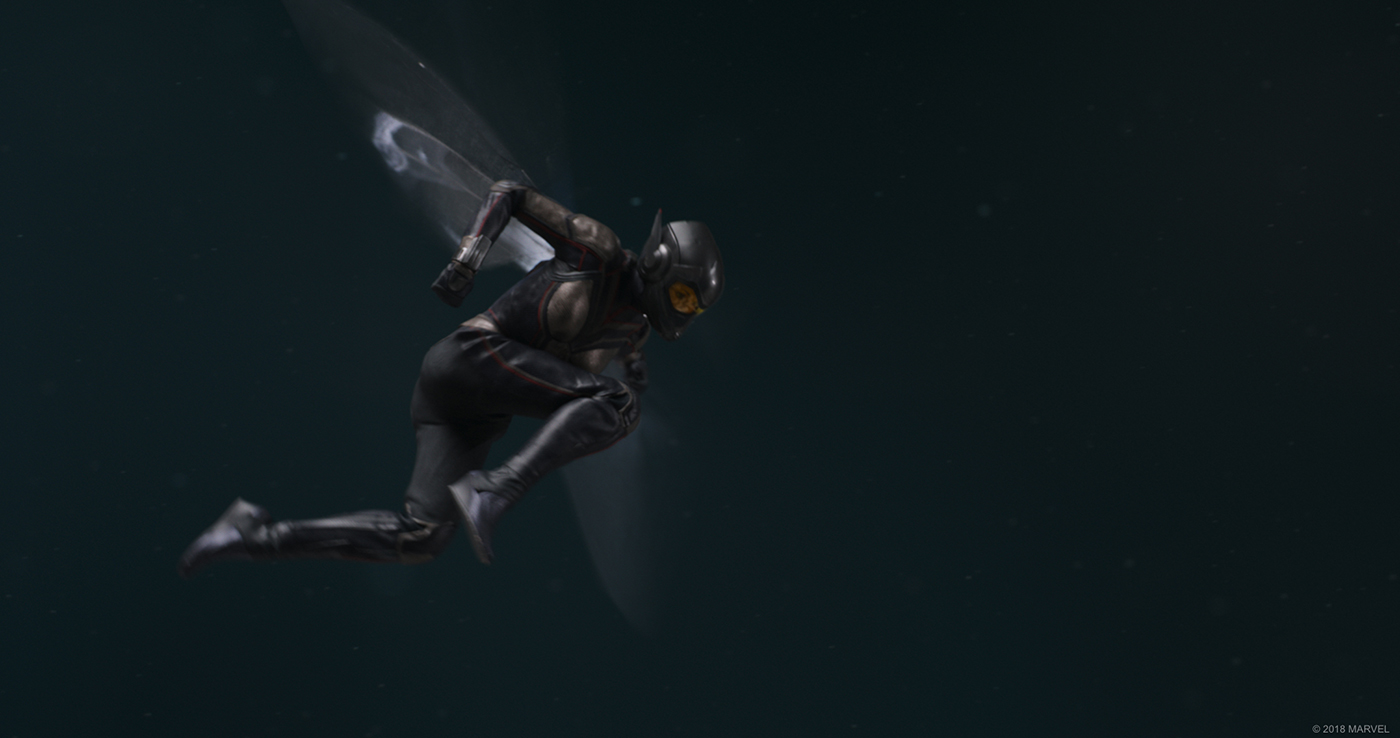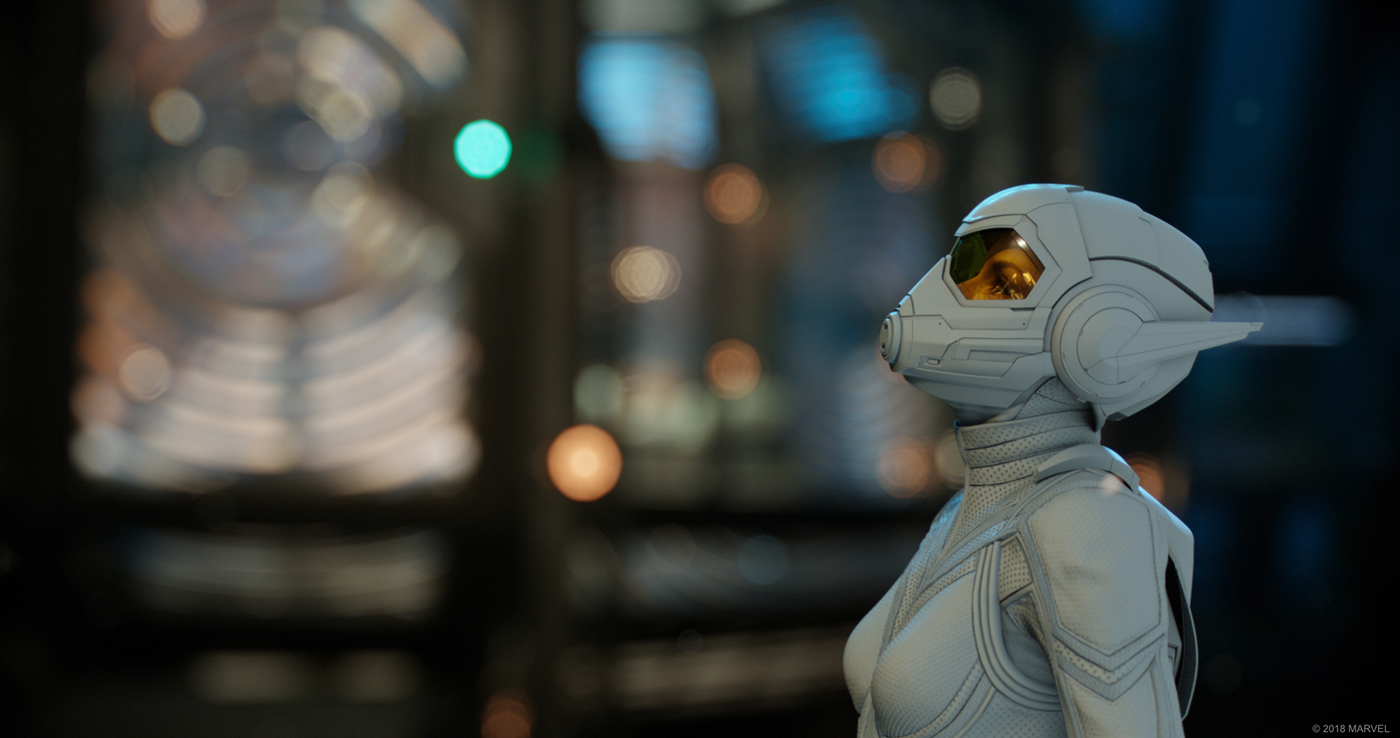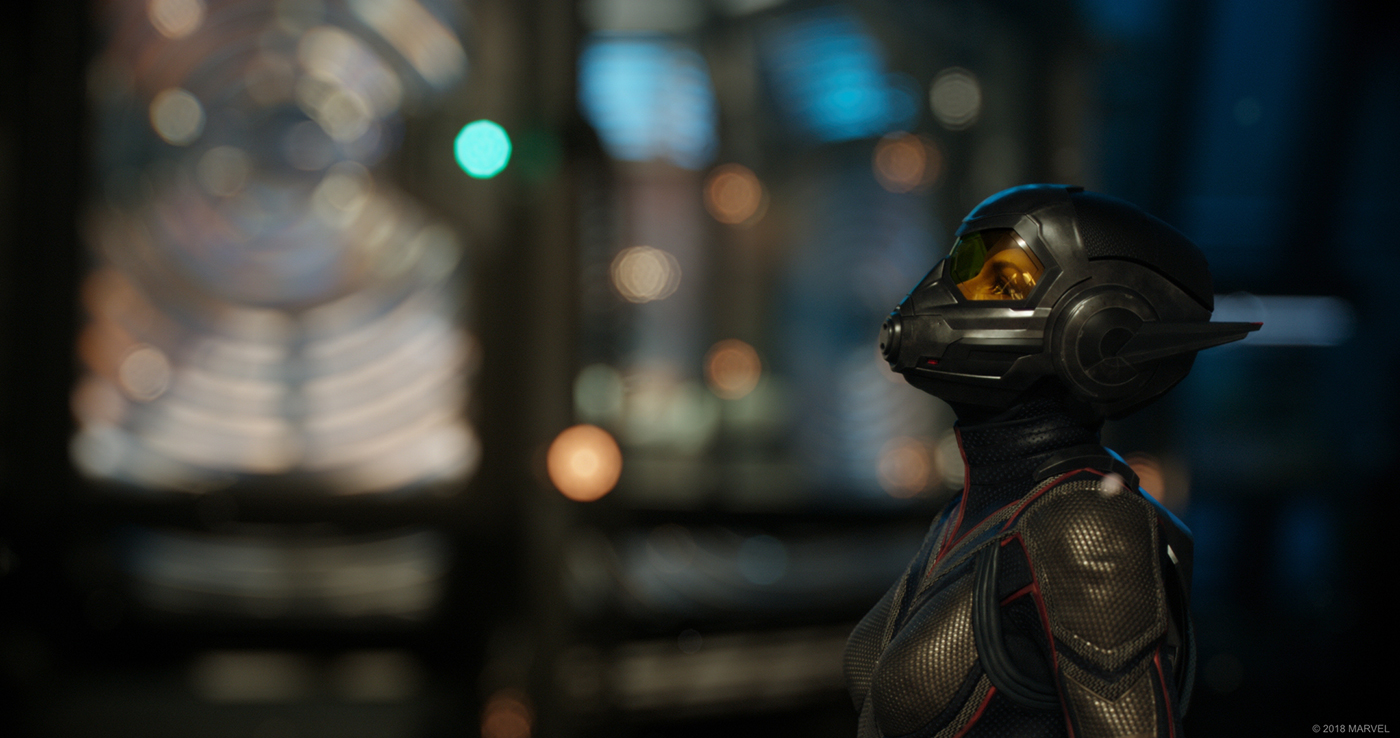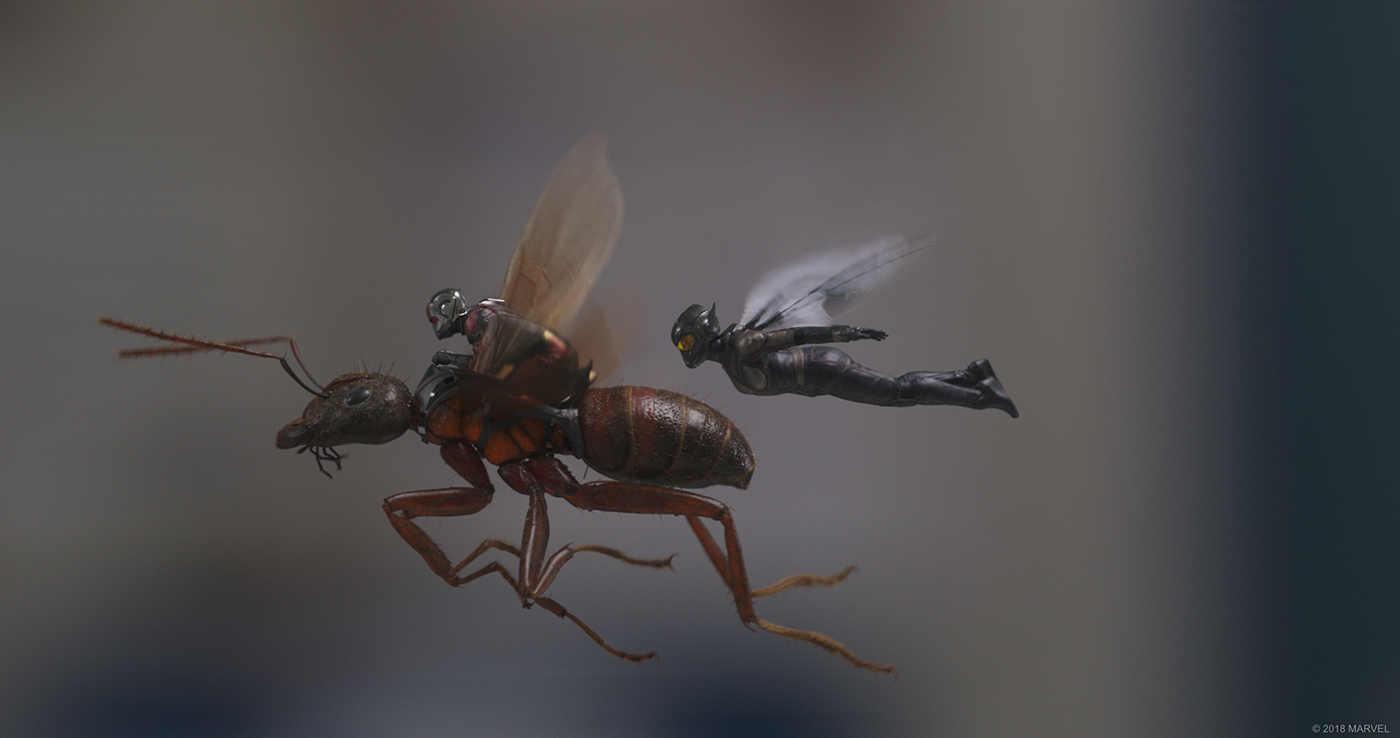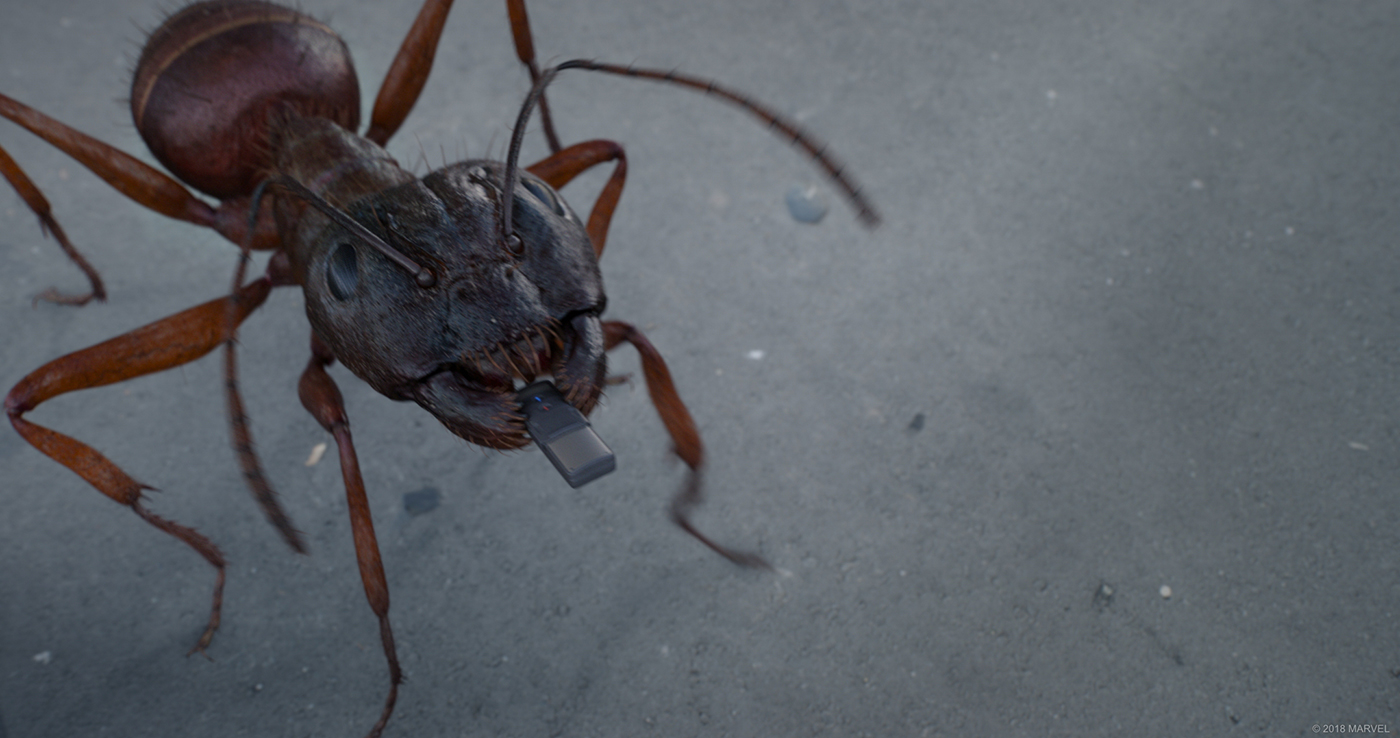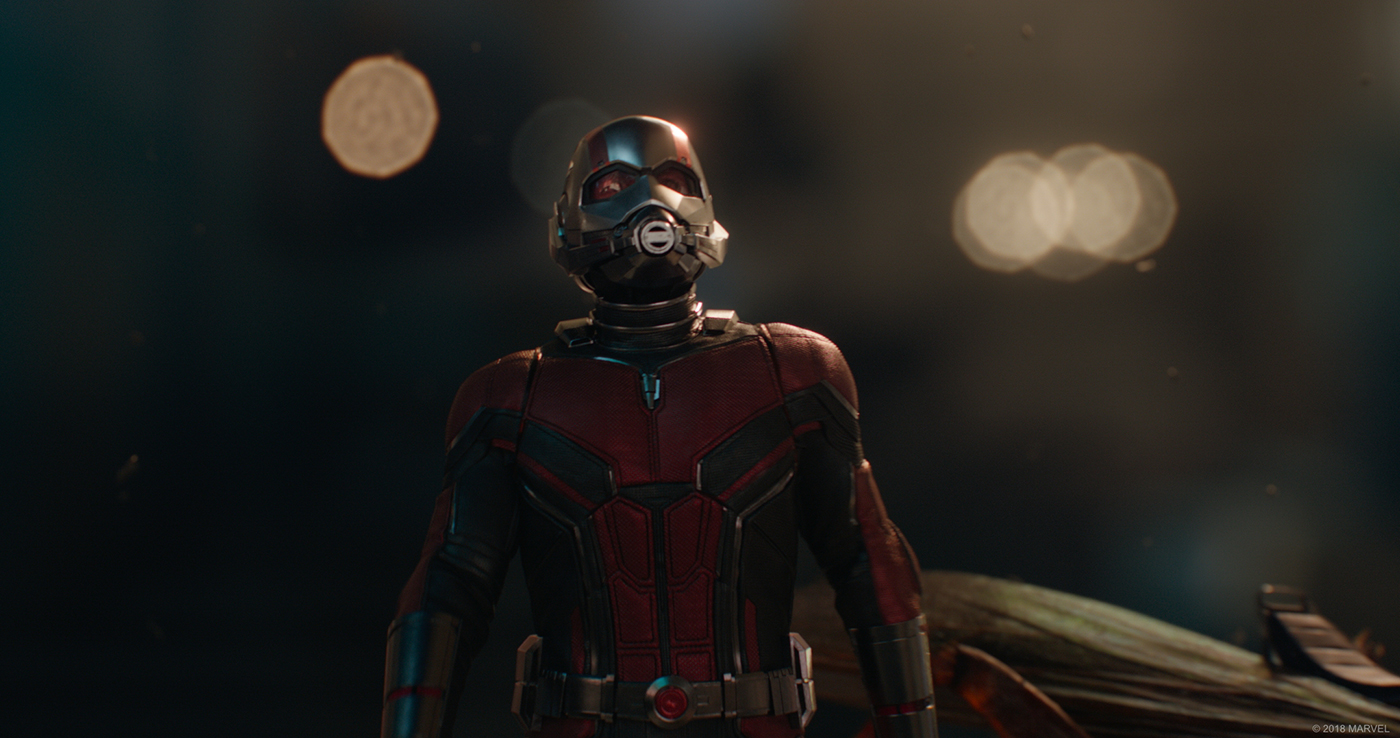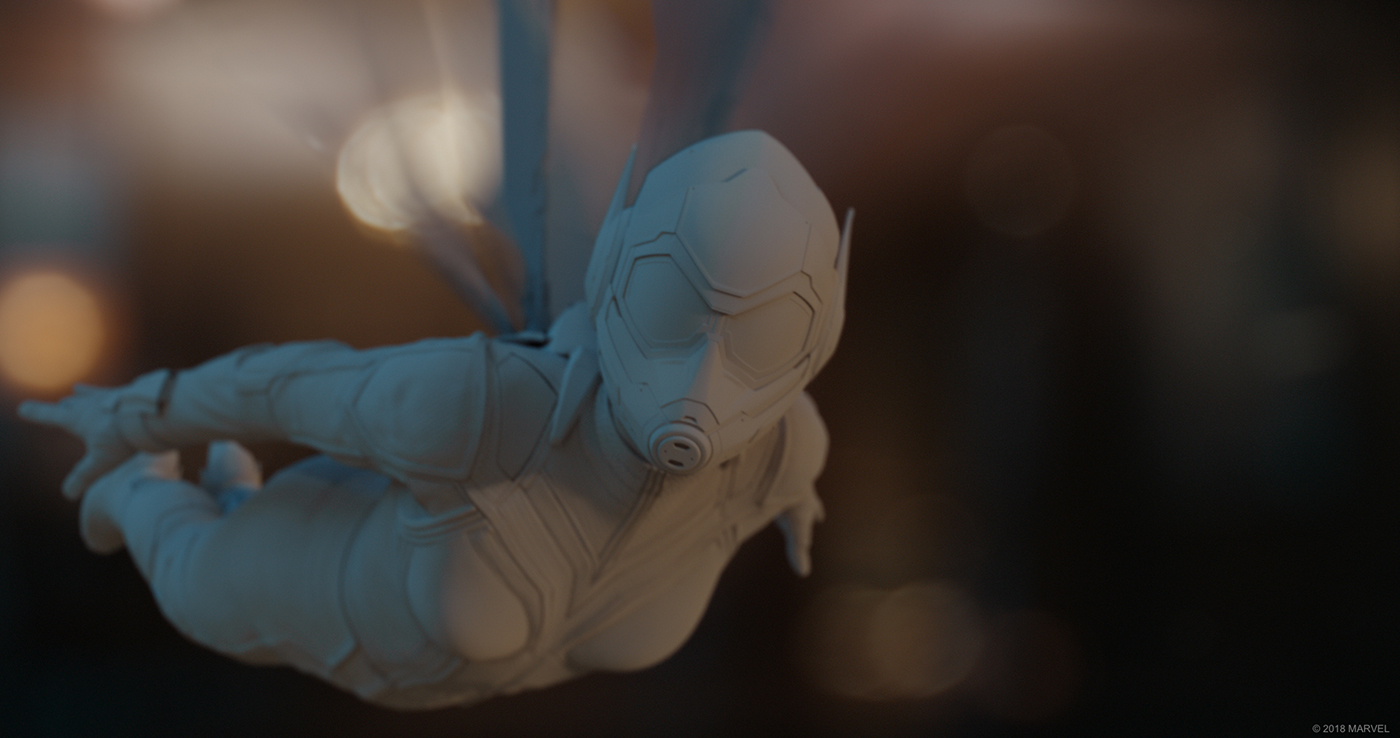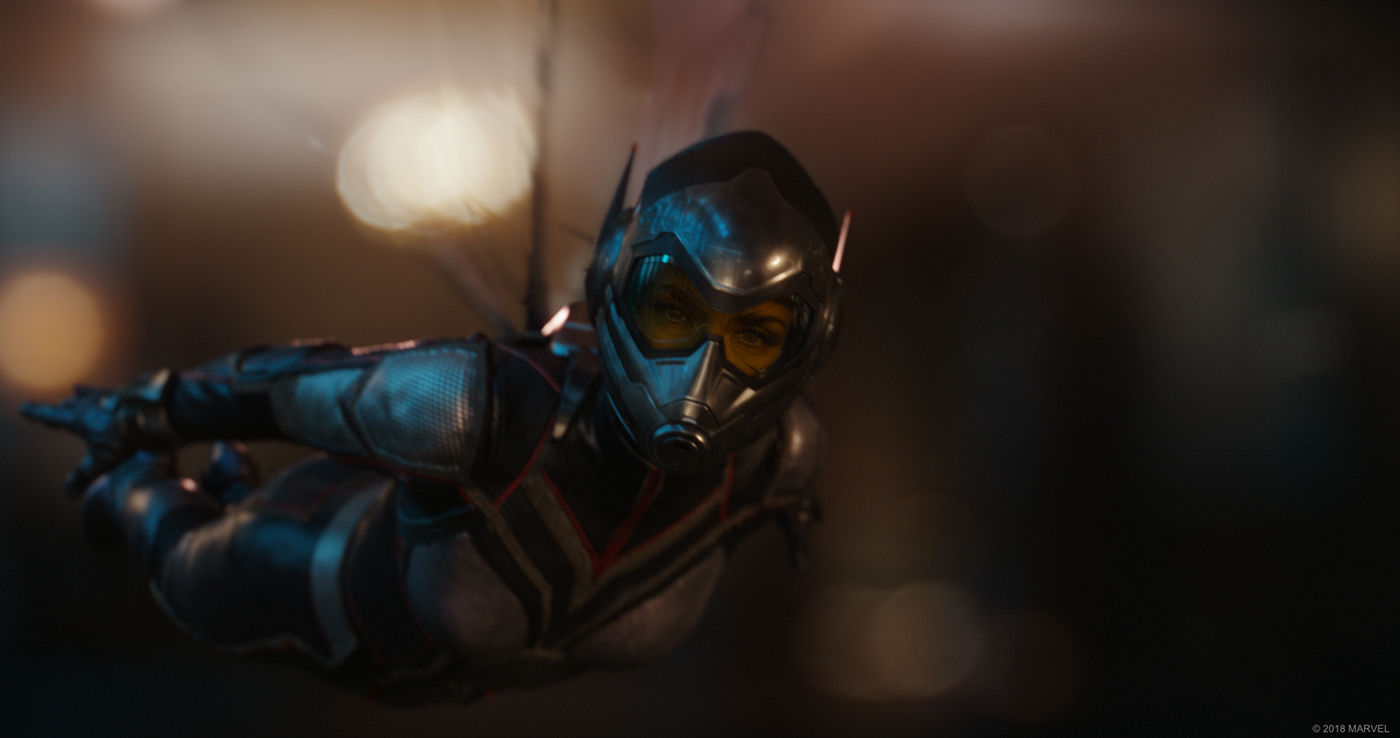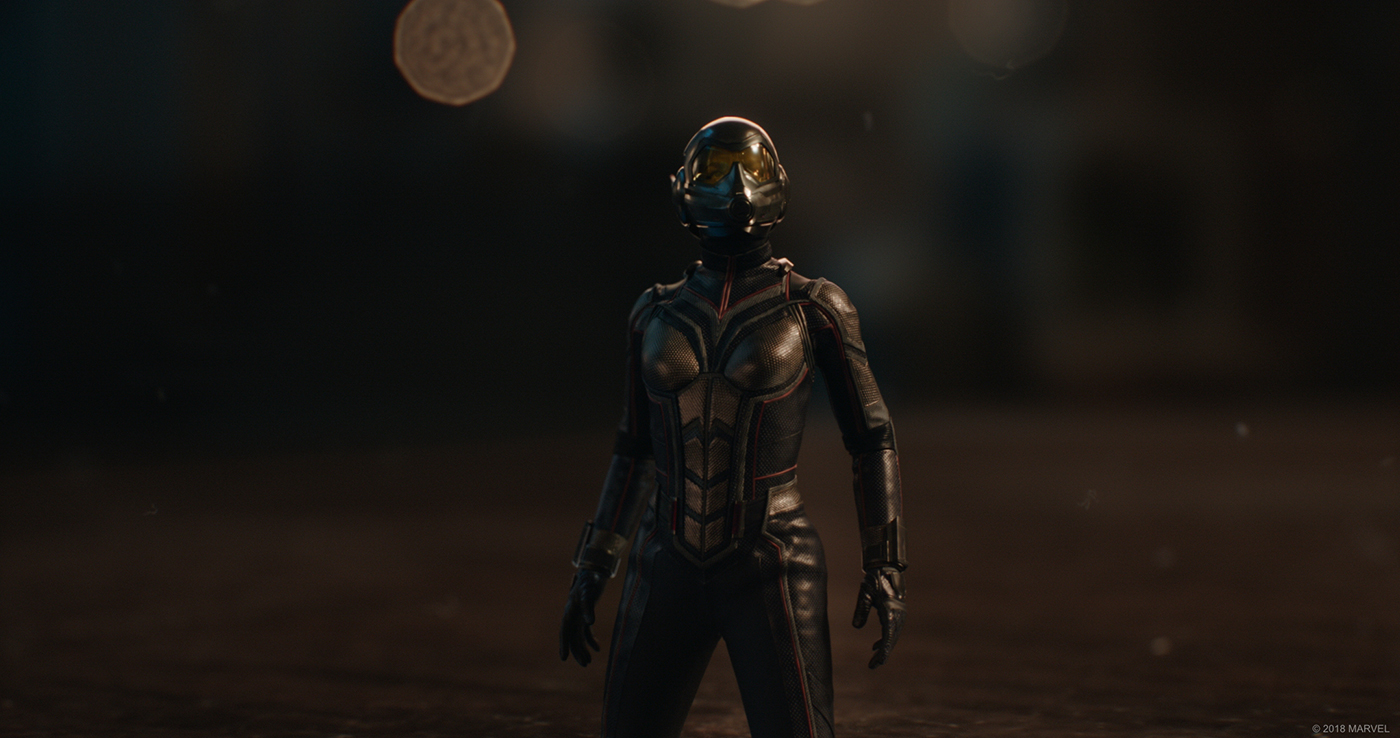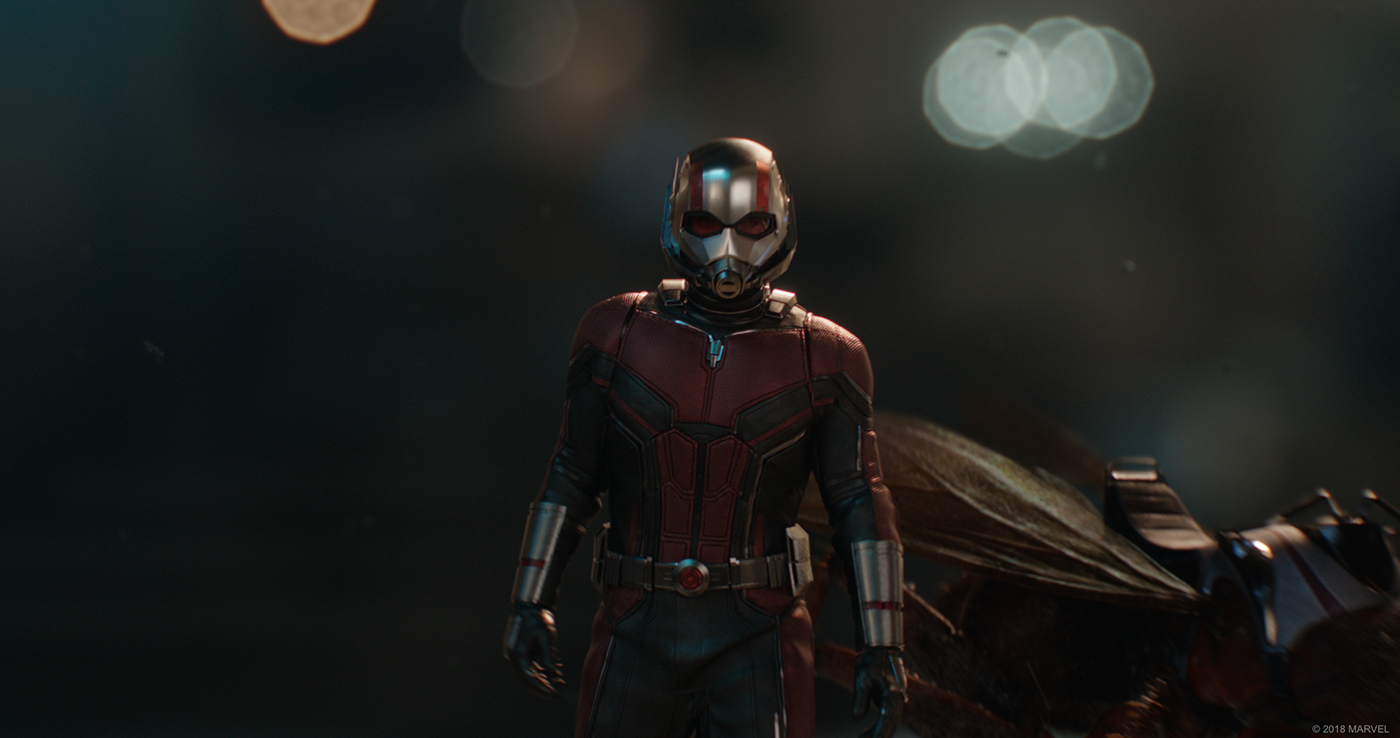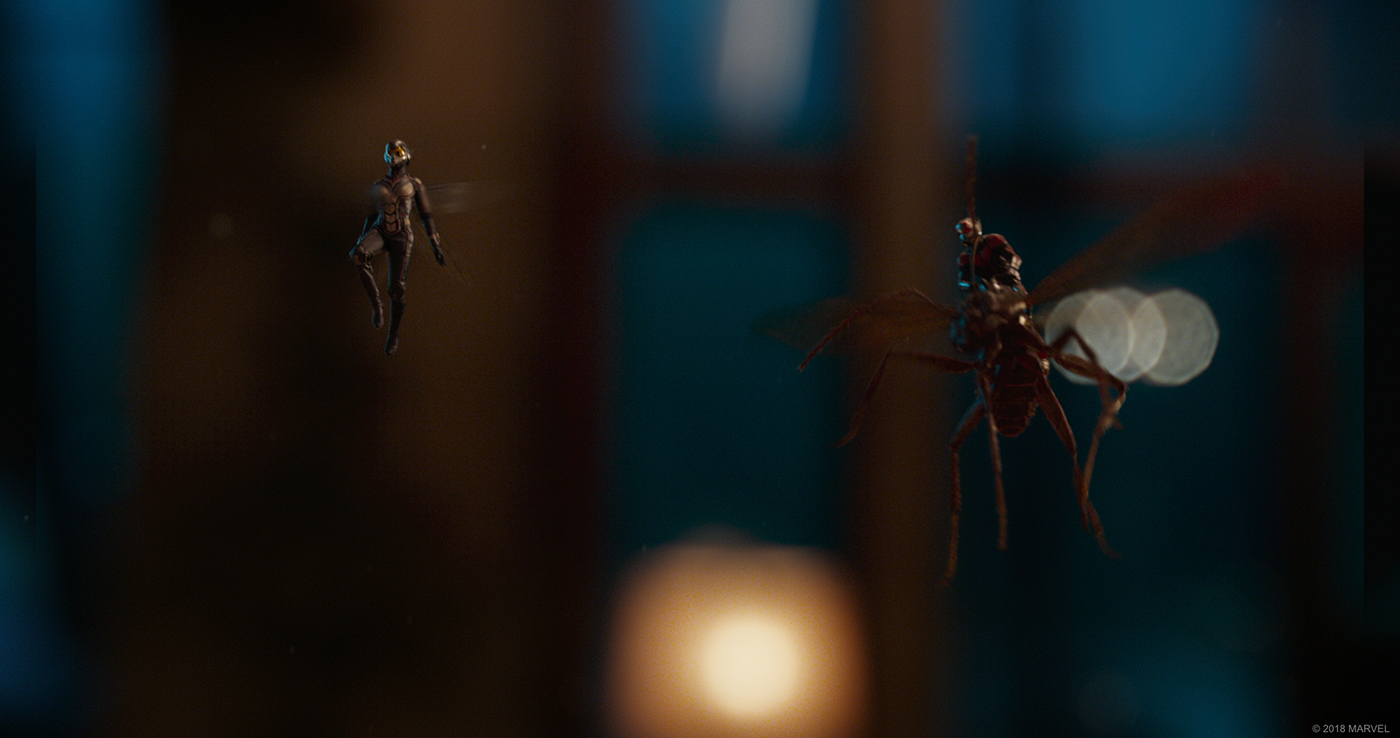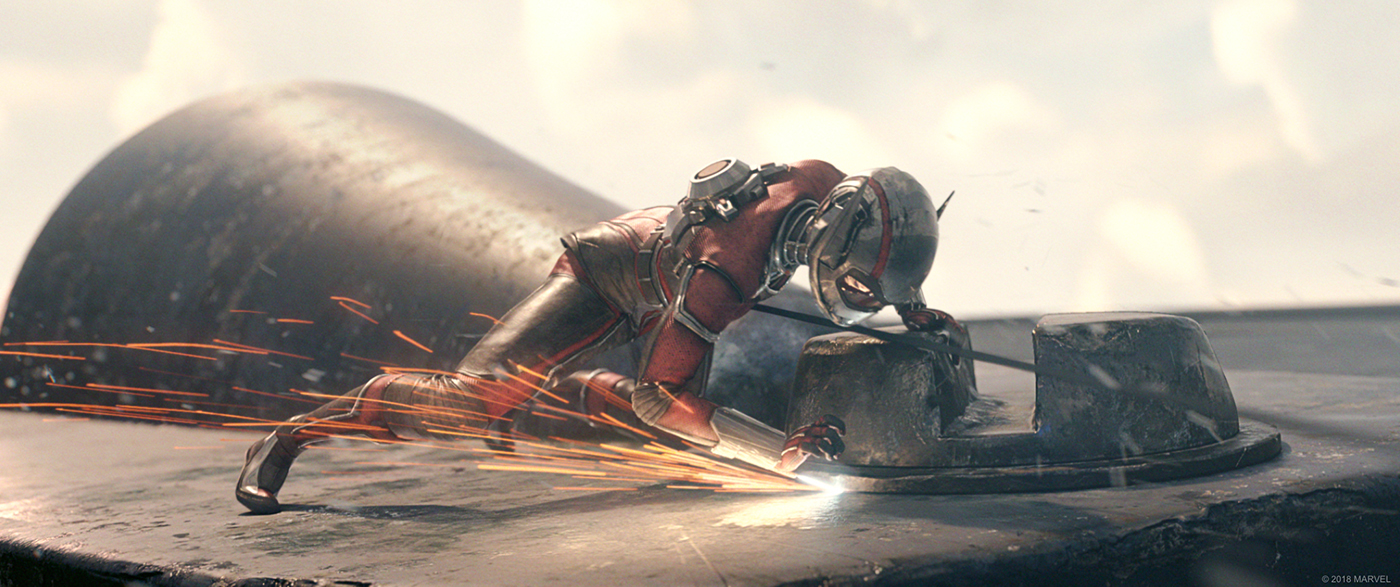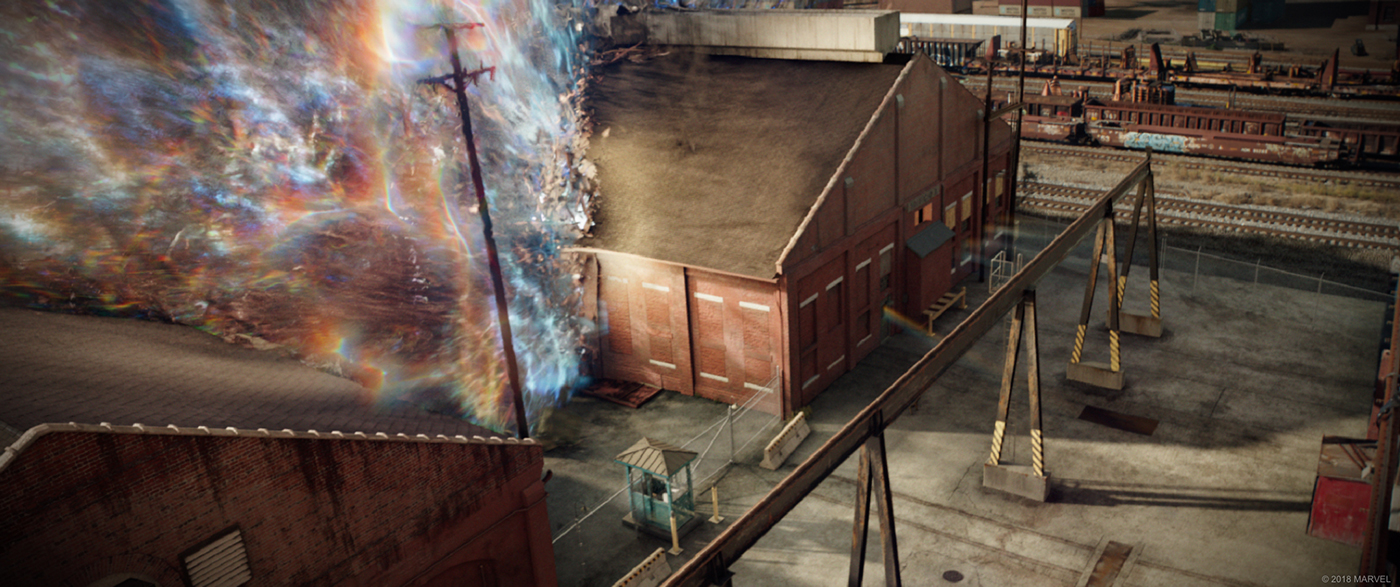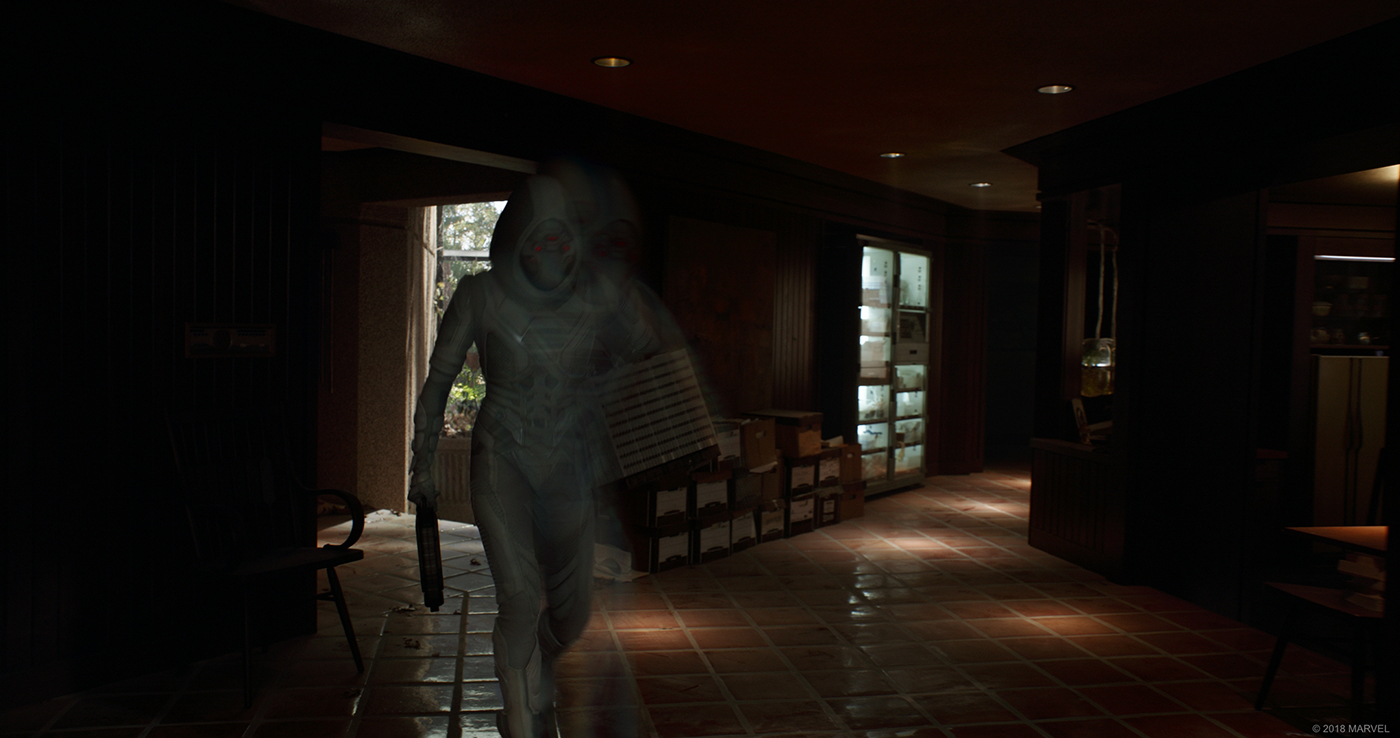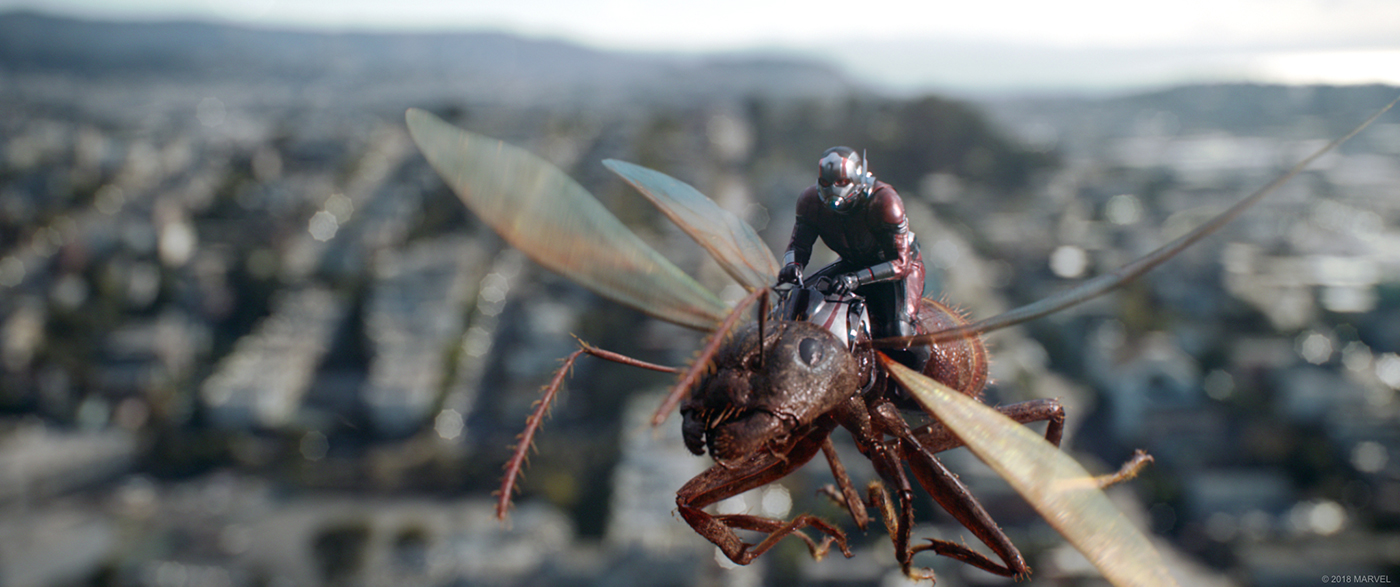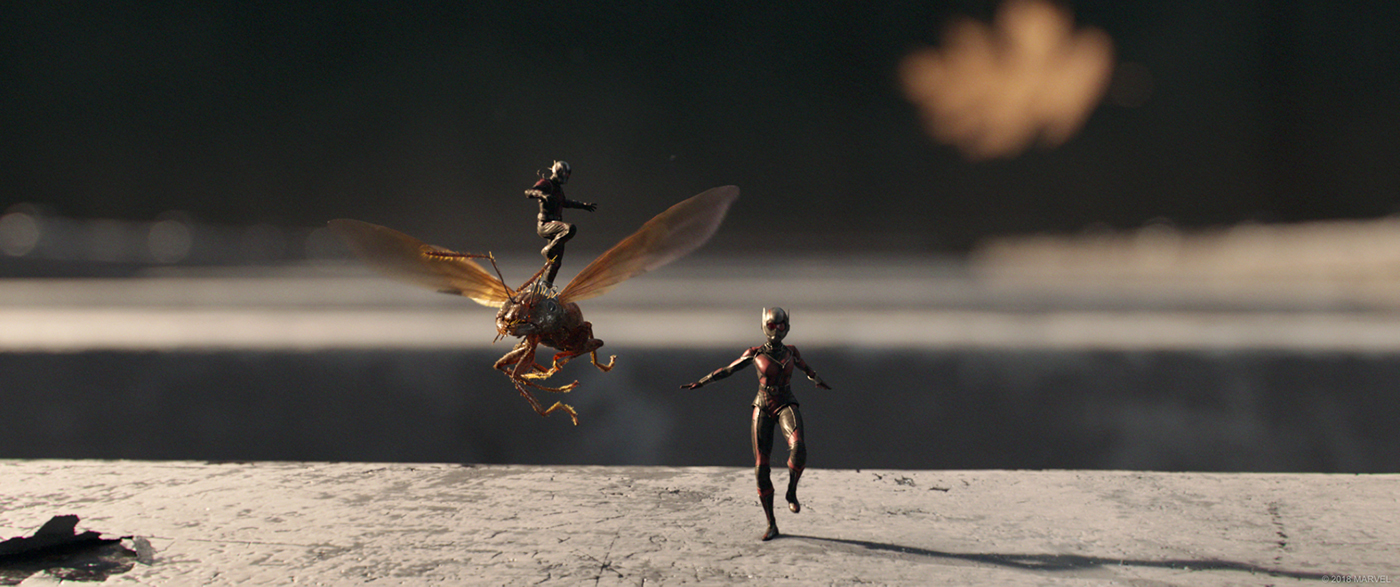At the beginning of the year, Kevin Souls, Brendan Seals and Raphael A. Pimentel had explained the work of Luma Pictures on BLACK PANTHER. Brendan and Raphael then worked on A WRINKLE IN TIME. They talk to us today about their work on the new Marvel movie, ANT-MAN AND THE WASP.
How did you get involved on this show?
Kevin Souls (KSO) // We have a long relationship with Marvel, and were a big part of the first ANT-MAN. They also know us as a creative team that can iterate quickly to find solutions, and for this movie we had a whole new set of challenges.
How was the collaboration with director Peyton Reed and VFX Supervisor Stephane Ceretti?
KSO // They are both really fun collaborative people, and super open to ideas. But it was both a compliment and challenge when they would ask “What do you think?”, because they would listen. And it was our opportunity to make a difference.
What was their expectations and approaches about the visual effects?
KSO // Peyton is so full of ideas and gags that it just keeps things growing and refining. Stephane is a very sophisticated VFX supervisor, and really an artist at heart. There is always a sense that you are pushing envelopes to find that special technique or idea that will push the shot. Either way, things constantly evolve until the last second, and it always looks better.
How do you balance director’s vision when creating VFX for any movie?
KSO // Our goal is to always exceed the directors expectations, and to do that we rely on a mixture of art direction and intuition. Marvel movies are always fast paced, and it requires us to sometimes extrapolate from the notes and predict what the director will want. You always have to design your setups with the maximum amount of flexibility, so you can turn on a dime when the story requires it.
What are the sequences made by Luma Pictures?
BSE // We worked on six sequences: Cassie’s School, Ghost Lair, New Prologue or the missile silo launch sequence, Prison Break – where Ant-Man helps The Wasp and Dr. Hank Pym escape, Scott Channels Janet, and Scott House Arrest.
What were the most technical challenging sequences of ‘Ant-Man and the Wasp’? How did your team overcome it?
KSO // Each sequence presented different technical challenges, so I wouldn’t say that any was more technically challenging than the others, but The “Flashback” sequence had the largest scope of work, requiring a full cg environment to be built matching to a real set. Additionally, we had to develop the Quantum Tunnel effects, which would eventually reach critical mass, and destroy the building, both inside and out.
Going in, we knew all the parameters of the effects needs, so we tried to spread the work out across departments to solve the different problems. First off the asset team was tasked with creating an asset that would look photoreal but have all the technical requirements that the FX department would need for the destruction, even art directing the broken pieces of the wall. Next, the animation took ownership of the Quantum Tunnel animation and destruction, knowing that we could achieve all of the shaking and collapse with rigging, blend shape and animation. With those parts tasked out, FX was free to develop the Tunnel FX, volumetrics, and the destruction simulations. Finally, composite and lighting was called in to develop the final look of the tunnel and pull all the elements together.
The niche VFX of Ant-Man lays in complexity details when he shrinks. How did you achieve seamless work of various perspective shots with accurate depth measurements?
KSO // Without a doubt, you need to start with a real camera and real lensing. It’s incredible how sensitive we are to field of view and scale. When something is wrong, people can just tell. So it was important to us that the camera speed and motion be accurate to the scale of Ant-Man. Next, we would layer in levels of detail to the assets and textures, adding geometric features that would hold up to scrutiny at close distance. The lighting also plays a huge role in depicting the scale of a scene, with the softness and fall off of the shadows needing to be precise. Finally, carefully utilizing Depth of Field to guide the eye, and add that photographic feel, is absolutely essential.
How did you manage tight integration of post-production pipeline between your physically separated studios?
KSO // Our two facilities share the same pipeline for all departments. So while we don’t have live parity of renders and setups, we can easily sync something back and forth between the locations and get the exact same result. This makes sharing super easy and, with the time difference, is like having a 24 hour facility – one just picks up where the other leaves off.
Let us know about the core team of Luma Pictures who worked on ‘Ant-Man and the Wasp’:
KSO // I was the VFX supervisor in Los Angeles. Brendan Seals was the VFX supervisor in Melbourne. Alex Cancado is the CG Supervisor in LA and Andrew Zink is the CG supervisor in Melbourne. Raphael Pimentel is the overall Animation Supervisor. Additionally, we had a crew of over 100 production and support staff spread across Los Angeles and Melbourne.
Luma Pictures supervisors shoot some sequences of the movie. Let us know in detail about it, on-shoot and post production both:
KSO // Jamie Hallett assisted Stephane Ceretti with supervision for Principle Photography in Atlanta, providing texture acquisition and production data. I assisted Jesse James with the Additional Photography and reshoots back here in Los Angeles.
How did you organize the work with your VFX Producer?
KSO // We split the work 50/50 across our Los Angeles and Melbourne studios.
How did you create the various shaders and textures for Ant-Man and the Wasp?
Brendan Seals (BSE) // Textures were ingested from Scanline VFX. The textures were appropriated into our pipeline and factored into shader networks look developed in Katana. We have a standardized approach to calibrated and neutralized look development with our own custom built real world studio light rig. With this rig we have captured a variety of real world materials for reference such as various metals and plastics and built these into our library. This greatly enhanced our ability to replicate the metals and fabrics of the prop costumes alongside the captured references of the suits provided by production.
Can you tell us more about their rigging and animation?
Raphael Pimentel (RPI) // By working on the first ANT-MAN film we came in to the project with an understanding of what was needed to achieve realism from a rigging and animation standpoint. All character animation shots began with motion capture data and hand keyed for final polish. Cloth simulations were also added on all shots for wrinkle and wind flutter.
How did you handle the flying sequences challenge?
BSE // For the Ghost Lair infiltration for example, the trick was maintaining a sense of locality and awareness of the environment whilst respecting the macro nature of the lensing required to capture Ant-Man and Wasp. Stef was always a big proponent of letting the character’s distance away from camera dictate the depth of field, that way we could meaningfully art direct the blurriness of the background environment so that the audience always had context for where they were but were watching shots with a realistic approach to lensing. Having that realistic approach to lensing where possible also meant letting the focal plane breathe in and out- it would be impossible for a DP to track perfectly flying characters, even more so at this macro level, so we allowed the characters to subtly drift in and out of focus in many of our flying sequences.
How does the macro aspect of the shots affect your work?
BSE // The main aspects of our work that were affected were developing macro environment details to hold up when characters stood or ran across close-up surfaces and paying respect to the lighting and depth of field of the on-set photography. Many times where the depth of field was too heavy in camera and locked to inanimate objects, we would rebuild the background either with 2.5 methods or utilizing CG environment builds to fabricate a new plate that allowed us the control to establish a different or animated rack focus. It’s so important to ensure the depth makes sense for that macro scale and that the bokeh kernel and aberrations are all replicated for realism.
Can you tell us more about the wings animation for the Wasp and the Ant?
RPI // We began by studying wasp and flying ant reference. Then replicating flying, taking off, landing or just roaming around. We essentially built our characters wing rigs to mirror behaviour in nature. Once animators were able to match wing motion as seen in nature, we knew we they were ready to be put into shots.
How did you create the missile and the silo?
KSO // The Missile Launch was a really fun sequence and, because it was fully CG, it gave us complete freedom to create the world – except for one little catch – parts of the new sequence had to directly match to the missile sequence from the first film. In fact, some of our new shots would inter-cut directly with older shots.
We began by ingesting the original assets for Hank and Janet. Not only did we need to match the shading and textures exactly, but also the rigging and cloth simulation – down to the way the elbows and waist folds moved!
For the launch we researched Russian Missile Silos and were able to find really great reference photography, and even YouTube clips, of the silo design, opening, and launching. With production’s blessing we went about modeling and texturing a highly detailed asset. The Missile was ingested and converted from the first film, we added geometric detail and enhance textures to serve the staging of the new shots. Volumetrics and blowing leaves were added to give a sense of scale and force. Once they were airborne we shifted over to the match-to environment. We started by studying the sky and clouds, eventually building new volumetric clouds and layers to match the look and framing of the original shots.
At the end of the sequence Janet shrinks down to enter into the missile computer. To achieve this new environment, we used a combination of fully CG computer parts, mixed with macro photography of real circuit boards. The Depth of Field was carefully dialed to give a sense of scale but also to guide the eye through the busy frame.
Can you explain in detail about the Quantum explosion of the warehouse?
KSO // The Quantum Tunnel Sequence contained some of our biggest FX challenges in Ant-Man and the Wasp. The Quantum Tunnel was meant to represent an opening into the Quantum Realm. There were actually two QT’s in the movie, the one in our sequence was an older model that was much less stable. Stephane Ceretti wanted this effect to have a unique feel, and although we were meant to destroy the building, it was important that it feel like caustic energy and optical distortion rather than an explosion. We started by looking at the previs and the pulsing rings that they had done. They great timing and energy. Using that as an inspiration, we designed and built a series of passes to be used in compositing to build ‘lens flare like’ optical distortions, refracting the surroundings. The rings would travel down the length and eventually burst out of the tunnel. These “bursts” were more refractive than concussive, but had the power to smash through the thick brick walls of the warehouse. We had to destroy the building inside and out, and it all needed to intercut with photography. To achieve this, we built photoreal replicas of the interior and exterior of the warehouse. The interior would be a mix of photography and CG, whereas the exterior always being entirely virtual. The modeling had to be carefully done, modeling closed surfaces, that it could be simulated for the destruction. Intermixed in the blast were enormous refractive rainbow caustic energy waves of the quantum energy. On top of that we ran massive volumetric simulations to add scale and texture.
The villain is Ghost. Can you explain in details about her phasing effect?
BSE // Ghost was a delicate character effect that had to be carefully controlled to not get in the way of her performance. We received a setup from DNEG that had some really interesting procedural extrusions in Houdini to produce a more tangible glitch that was complemented by various transparency, refractive and aberration treatments in Nuke. We analyzed the effect progression arc that our shots were calling for repeatedly and decided to create a custom Ghost gizmo in Nuke. The gizmo would trigger the sequential effect, utilizing Houdini renders and the treatments in Nuke on a frame set by the compositors. The setup then had the flexibility to edit and change the individual aspects of her look as well as the overall timing to suit the performance ques in the shot.
In a sequence, Scott Lang is really tiny. How did you approach this sequence?
BSE // The idea behind the sequence was to use an old technique called forced perspective, aided by modern technology, to achieve the visual gag of the giant-sized Ant-Man literally bursting at the seams of a small broom closet. To accomplish this, all the plates were designed to be shot independently and then assembled in the compositing process. Ant-Man was shot in a green screen scale model of the room interior and The Wasp was shot using reference props to simulate interaction. The room interior itself was captured as a plate but also scanned in 3D, so we could easily recreate the shots that required a virtual camera move and to manipulate the ceiling when Ant-Man slams into it. The pieces were individually tracked and match-moved while another camera was created to re-film the scene and compensate for the different field of views of each acquisition camera. Luma replaced pieces of Ant-Man’s body with a high-resolution full CG asset. The mix of photography and CG was a key tool we used that helped trick the eye and maintain all the subtle comedic performances.
What is your favorite shot or sequence?
BSE // I’m really fond of our hero Ant-Man shot in Ghost’s Lair where he jumps down from the ant onto the table. It’s not your typical huge action shot but it was the culmination of all our efforts and has some beautiful subtleties to it.
What is your best memory on this show?
BSE // Having Stef ask if the wasp suit in a particular shot was the practical photography but was in fact CG. Stef was very impressed with that and it was really gratifying to see our asset team’s hard work in look dev pay off.
How long have you worked on this show?
BSE // We worked on the show for over 9 months.
What’s the VFX shots count?
BSE // We worked on over 230 shots.
What was the size of your team?
BSE // We had over 100 production crew spread across our Los Angeles and Melbourne studios.
Any upcoming projects of Luma Pictures or other details you can share?
KSO // We’ve just wrapped on MARY POPPINS RETURNS and currently working on THE NUTCRACKER AND THE FOUR REALMS and CAPTAIN MARVEL.
A big thanks for your time.
// WANT TO KNOW MORE?
Luma Pictures: Dedicated page about ANT-MAN AND THE WASP on Luma Pictures website.
© Vincent Frei – The Art of VFX – 2018


